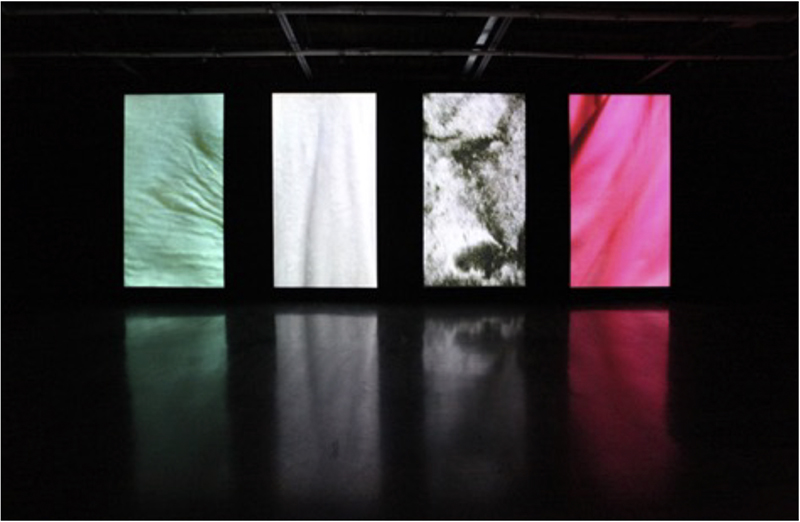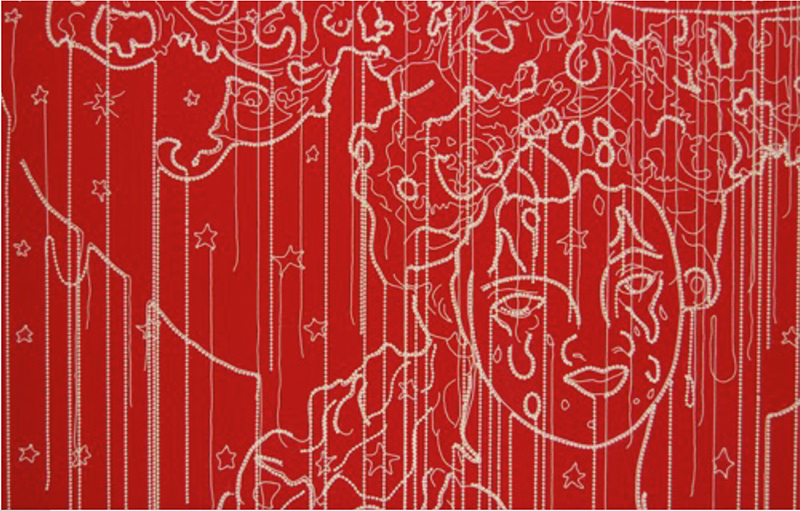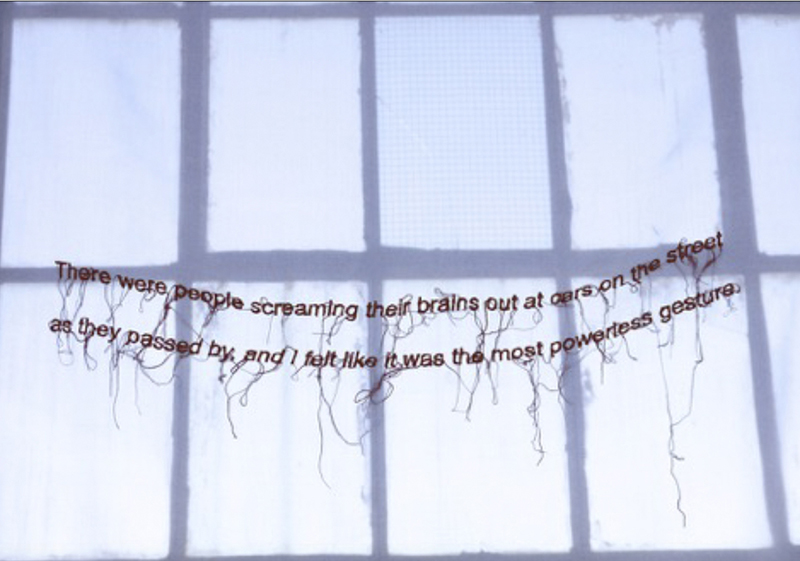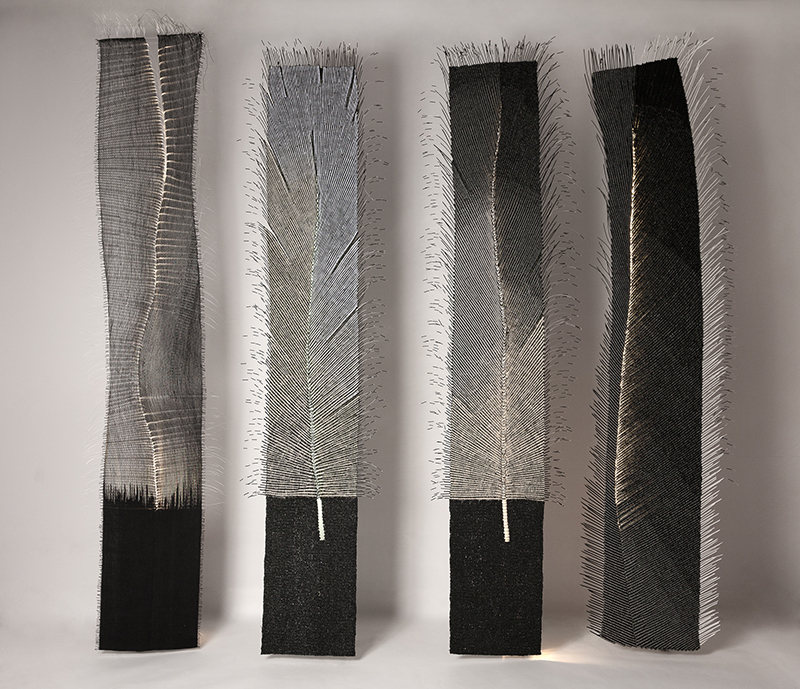
The second Hangzhou Triennial of Fiber Art will be delayed: Instead of 25 August, the opening will now take place on 26 September (due to security issues with the G20 Summit running at the beginning of September). The names of the 64 artists chosen for this exhibition are now known. Among them about a dozen well-known textile artists only. Surprisingly also not so many names of weavers on the list (as far as I could guess). This could mean a lot of new and younger artists and new concepts of textile art/ weaving, a good reason to go and see this Triennial. More news on the website http://www.fiberarthangzhou.com/Site_En/news/2016/003/0015.shtml
Here the press release of July 2016
Beatrijs Sterk
Weaving & We 2016 Hangzhou Triennial of Fiber Art
September 26th – October 25th, 2016
Venues: Zhejiang Art Museum, China National Silk Museum,
Museum of China Academy of Art
Organizers: Zhejiang Provincial Department of Culture, Publicity Department of CPC
Hangzhou Municipal Committee, China Academy of Art (CAA)
Co-organizers: Zhejiang Art Museum, Research Institute of Art Tapestry Varbanov
(CAA), China National Silk Museum, CAA Art Museum
Exhibition Director: Si Shunwei
Artistic Director: Shi Hui
Curators: Liu Xiao, Xu Jia, Assadour Markarov
In September 2016, Hangzhou – an ancient silk and global city –holds the second
Hangzhou Triennial of Fiber Art. Once again an international dialogue is created between
disciplines, geographies and people. The Triennial stages this dialogue from a
fiber art’s perspective both chronologically and on a grand scale.
In 2013, the first Hangzhou Triennial of Fiber Art attracted over 150 thousand visitors
and artists from more than 16 countries. For the first time audiences in China had an
opportunity to learn about modern fiber art. At the time of the Second Hangzhou Triennial
the G20 Summit will take place. Running concurrently, these two international
events will run in parallel. Two global visions converge together with the creative vitality
of the art works on display.

Exhibition Overview
The second Triennial has a distinctive theme ,“Weaving & We”, a starting
point for curators and artists.
‘Weaving’ is a special practice. It is embedded in narrative. It tells stories that
combine a history of textile labor and production with human experience. It tells these stories with raw materials and advanced technology. Technology changes at a fast pace and so to does the knowledge and perceptions of weavers around the world,
as individuals, groups and regions..
The exhibition has four sections which represent the research of curators. The artists
selected echo Weaving & We from a numbers of different positions and perspectives
Needles & Proverbs
Needles can serve the function of languages. In traditional Chinese, the
Chinese character of “needle”, has the same pronunciation as the character, which
means “proverb.” In Chinese, the word “needle” shares the meaning of proverb
without an implication of gender. Whether the long bamboo needle for weaving and
knitting, or the crewel needles for embroidery, all needles have the metaphor of admonition. In both Chinese and Western cultures, fine needles are connected to
languages. They represent the sensation of the human body, the activation and revival
of humanity, the cultivation and selfreflection of the soul, and a prophecy of the future.
Body & Identity
The concepts of weaving and human body are intertwined; textiles of different
materials, including wool, hemp, silk, and cotton, give humans unique and special
body sensation. Weaving is not only a protection for the body but it also serves as a
symbol of feelings and identity. It also represents memory and history. Textiles
encompass cultural diversity, representing many different people, ideas and regions
across the world.
Weaving & Form
Weaving is both a two-dimensional fabric and a method of three-dimensional shaping. It also displays the techniques and the experimental characteristics of modern fiber art. It has inspired many conceptual transformations but always connected to social reality. Weaving not only has many different behaviors of weaving but can constructs many different concepts like constructing, building” and perspective.
Scene & Phenomenon
The manufacturing process of weaving is technologically, socially and culturally.
Weaving originated in people homes, developed in small workshops that transformed
local industries to finally become global factories. Weaving also raises many questions
about labor, production and consumption, it is about individual workers and well as the
many who work in enterprises and groups, cooperatives and collectives.

Specific Units:Documents and Education
Social Textile A collaborative project with British curator Grant Watson, supported by INIVA.
The Rising and Glorious Periods of Polish Fiber Art: Fiber Art Education in Poland in
1950-1980The collaborative project with Polish curator Michal Jachula.
The Story of Embroidery:How Small Skill of Needlework Enters the History of Painting, including Song EmbroideryThe story of embroidery of Liang Xuefang and her mother who are both embroiderers inZhenhu, Suzhou.
Peony Project:Peony and Textile“Her robe is made of cloud, her face of flowers made, Caressed by vernal breeze, freshened by morning dew”. Li Bai (Poet from Tang Dynasty)
Based on the psychological impressions and memories of peonies, the use on textile reveals
the pattern transformations from ancient China to our daily life and culture nowadays.
International workshop titled “World Wide Weaving”– Seed Bank of Crafts
Weaving Globally, Metaphorically and Locally – Starting from Hangzhou
World Wide Weaving is an arena for investigation. It will be held for the sixth time in the
autumn 2016 — this time in collaboration with the Fiber Art Department of China and the Academy of Art and Department of Textile Art of Oslo Academy of Art.
Weaving is one of the oldest crafts in human cultures, along with knitting and pottery.
Ancient textile remains have been found in all parts of the world. But textiles are more
than merely interwoven materials. As means of exchange and trade, and with their
potential to communicate complex layers of social meaning, textiles are directly related
to the fabric of social life.
Textile Thinking: International Symposium/Lectures
Co-organizer: Mill6 Foundation
An International symposium called “Textile Thinking” includes a keynote by Professor Sarat Maharaj, the internationally known curator and scholar. It is first time that Professor Maharaj has given a presentation on this theme in Asia. Maharaj’s research and writing on textiles date back to 1980s and he sees artists’ works as a form of knowledge production through textiles.
Centering on the theme“Weaving & We”, the Triennial will launch a series of topics concerning fiber art in the past and at present for discussion, including Museum collections and researches on fiber art; Researchers’s Works: The Contexts and Pragmatics of Fiber Art; Fiber Art Cartography: Experience in China and panel discussions among curators, critics and artists. The speakers includes Jessica Hemmings, writer and curator, Professor of Visual Culture and Head of the School of Visual Culture at the National College of Art & Design,Dublin; Bruno Ythier, Chief curator of Conservateur de la Cite de la Tapisserie, Aubusson; Hang Jian, Director of the International Design Museum, Hangzhou; Edith Cheung Sai May, textile educator, consultant, researcher and writer; Angelika Li, Director of MILL6 Foundation, Hong Kong; Sandy Hsiu-chih Lo, curator and writer from Taiwan, China; Marta Kowlewska, curator and writer on textile art history from Warsaw. During the triennial, we will organize series of lectures and workshops.
Solo Exhibition: Liang Shaoji
Liang Shaoji’s solo exhibition, “Cloud above Cloud” will be hosted at the same time with the Triennial CAA Museum. For the first time this early graduate from China Academy of Art will hold an exhibition in his Alma Mater. Liang’s works are renowned for interactions with nature. They are drawn from life as core and living creatures as media.
Artists
Ashim Ahluwalia, Fabio Lattanzi Antinori, Atelier Chen Hao Ru, Victor Asliuk, Rossella Biscotti, Lyn Carter, Yung Ho Chang/FCJZ, Chen Chieh-Jen, Cheng Xiaofang, Céline Condorelli, Alice Creischer, David & Elisabeth Crook, Włodzimierz Cygan, Godfried Donkor, Guo Yaoxian, Eleng Luluan, Maddalena Forcella & Santiago Borja, Jérémy Gobé, Arcana Hande, Petter Hellsing, Sheila Hicks, He Xiangyu, Hu Xiaoyuan, Hui Ganyuan, Janis Jefferies, Kimsooja, Maria Lai, Li Lei, Liang Xuefang & Ma Huirong, Liu Beili, Liu Jiajing, Liu Wei, Hew Locke, Claudia Losi, Lu Yuanjiong, Anjali Monteiro & K.P.Jayasankar, Oscar Murillo, Numen / For Use, Prabhakar Pachpute, Sudhir Patwardhan, Adelina Popnedeleva, Hans Hamid Rasmussen, Willem de Rooij, Wojciech Sadley, Ismini Samanidou & Simon Barker, Magda Sayeg, Leang Seckon, Shen Lieyi, Andreas Siekmann, Junko Suzuki, Hideho Tanaka, Lycia
Danielle Trouton, Heidi Voet, Wang Zhipeng & Fu Dongting, Tali Weinberg, The
Otolith Group, Pae White, Xu Jiang / Yuan Liujun.

